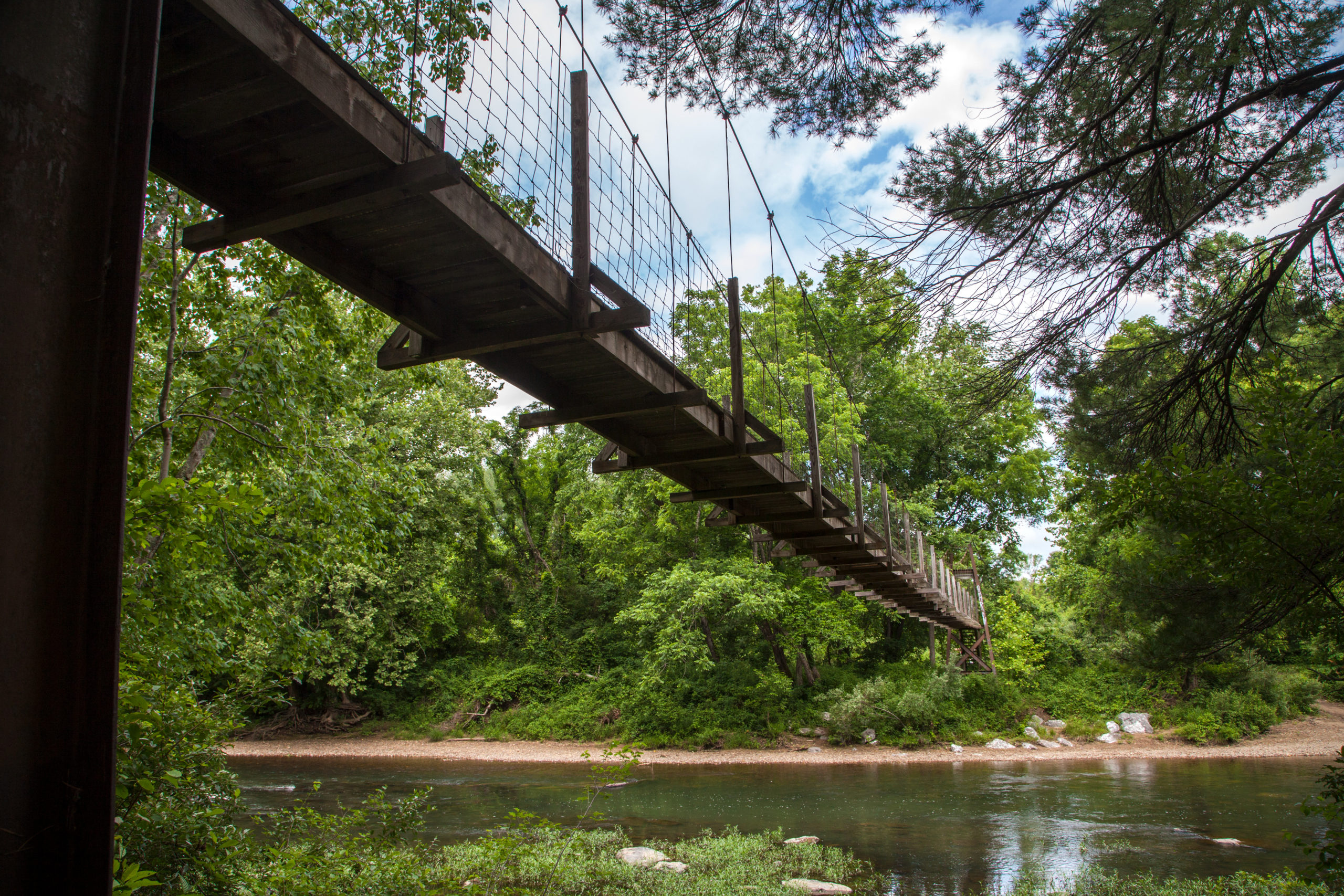For more than 50 years Earth Day has been a public appreciation day for the environment. It’s a day to plant trees, rally behind recycling, and laud efforts to protect national public lands and wilderness areas. Celebrate Earth Day with us by venturing into “the wilds” of the Shenandoah Valley. Ditch the earbuds and enjoy the songs of nature as you adventure through our favorite spaces.
Natural Area Preserves
There are 11 natural area preserves in Virginia’s Shenandoah Valley but only one is publicly accessible: Goshen Pass Natural Area Preserve in Rockbridge County, Virginia.
Goshen Pass NAP is Virginia’s oldest state-managed natural area and requires a wildlife management area permit to park. At 936 acres, its main draw is the beautiful stretch of gorge carved by the Maury River. Among the rare flora and fauna preserved at this site are the Appalachian jewelwing (Calopteryx angustipennis) damselfly.
Wildlife Management Areas
Virginia
The Goshen and Little North Mountain Wildlife Management Area (WMA) overlaps but is not the same as the Goshen Pass Natural Area Preserve. The WMA is 33,697 acres, making it the largest WMA in Virginia. A key activity here is trout fishing, for which a license is required.
Short Hills WMA is 4,232 acres across Rockbridge and Botetourt Counties and offers plethora rocky outcroppings “which contributes substantially to water quality and cave habitat,” according to the Virginia Department of Wildlife Resources.
Both Goshen and Short Hills are open to primitive camping but written authorization is required. Learn more.
West Virginia
Shannondale Springs WMA is 1,361 acres bordered by the Shenandoah River in Jefferson County. Camping is prohibited by there is a boat launch to help you get out and catch a big bass.
Sleepy Creek WMA spans the Berkeley and Morgan County line. The 22,298 acres includes a 205-acre lake open for boating and fishing. Feel free to camp at Sleepy Creek. Seventy primitive sites are available with pit toilets nearby.
View this post on Instagram
U. S. National Park Service
The National Park Service manages iconic spaces like the Blue Ridge Parkway, Appalachian Trail, Harpers Ferry, and Shenandoah National Park. While the first two are always free of charge the latter two have an entry fee except on five select days during the year.
April 16 is the first day of National Park Week and a fee-free day at Harpers Ferry National Historical Park and Shenandoah National Park. After that, mark August 4, the Anniversary of the Great American Outdoors Act. We recommend you explore these parks throughout the year to experience and appreciate every season.
Harpers Ferry National Historical Park is a storied location along the Shenandoah and Potomac Rivers. It was here the railroad realized its first success and John Brown fought back against the institution of slavery. Harpers Ferry was also the site of the largest surrender of Federal troops during the Civil War, and it bore witness to one of America’s first integrated schools.
View this post on Instagram
Shenandoah National Park encompasses more than 200,000 acres of beautiful meadows, hardwood forests and hollows, springs and waterfalls, and breathtaking vistas. Access it from several points, including Front Royal, Luray, and Waynesboro. Meander Skyline Drive to make your way through the park, taking advantage of scenic stops along the way. Wildlife is abundant, so obey posted speed limits.
>> First Timer’s Guide to Visiting a National Park
U. S. Forest Service
The George Washington and Jefferson National Forest is not one neat parcel of land. It straddles the Virginia-West Virginia line at the top of the Shenandoah Valley and extends to the Virginia-North Carolina border to connect with Cherokee National Forest. It encompasses a majority of Massanutten Mountain, Fort Valley, and multiple peaks and valleys across Augusta, Nelson, Rockbridge, Amherst, Botetourt, and Beford Counties as the Blue Ridge Parkway and Appalachian Trail meander through. In total, the GWJ National Forest is more than 1,800,000 acres.
View this post on Instagram
Visit a National Forest requires adherence to some safety and responsibility measures, which are outlined here. Of note, but not a comprehensive list …
- Some activities require a permit
- Some areas require a fee
- Fireworks are always prohibited; obey campfire restrictions
- Do not damage or remove any live trees
- Litter and abandoned property are frowned upon
- Non-public buildings should be avoided. Do not damage them or remove any artifacts from around them; they’re considered to have historic or archaeological significance.
Finding camping, picnicking, fishing, and more using this handy virtual map from the Forest Service.
Wilderness Areas
Ramsey’s Draft is near the West Virginia border 22 miles west of Staunton off Route 250. At 6,519 acres this wilderness area has 37 miles of trails.
Popular wilderness areas near the Blue Ridge Parkway are The Priest, St. Mary’s, and James River Face.
The Priest features the largest elevation gain of any trail in Virginia at 3,066 feet.
View this post on Instagram
The highlight at St. Mary’s is the cascading waterfall tumbling 15 feet into a plunge pool. It’s a favorite place to cool off during the peak of summer.
As the first wilderness area to be established in Virginia, the 8,000-acre James River Face Wilderness is called “Grandfather of Virginia’s Wilderness”. This expanse is also home to Devil’s Marbleyard, an 8-acre Antietam quartzite boulder field some find fun to scramble.
Travel safely through our favorite wonderfully wild spaces and be sure to leave them the way you first encountered them.
Header image is Goshen Pass NAP/WMA. Photo by Matt Maier and courtesy of Virginia Tourism Corporation.





